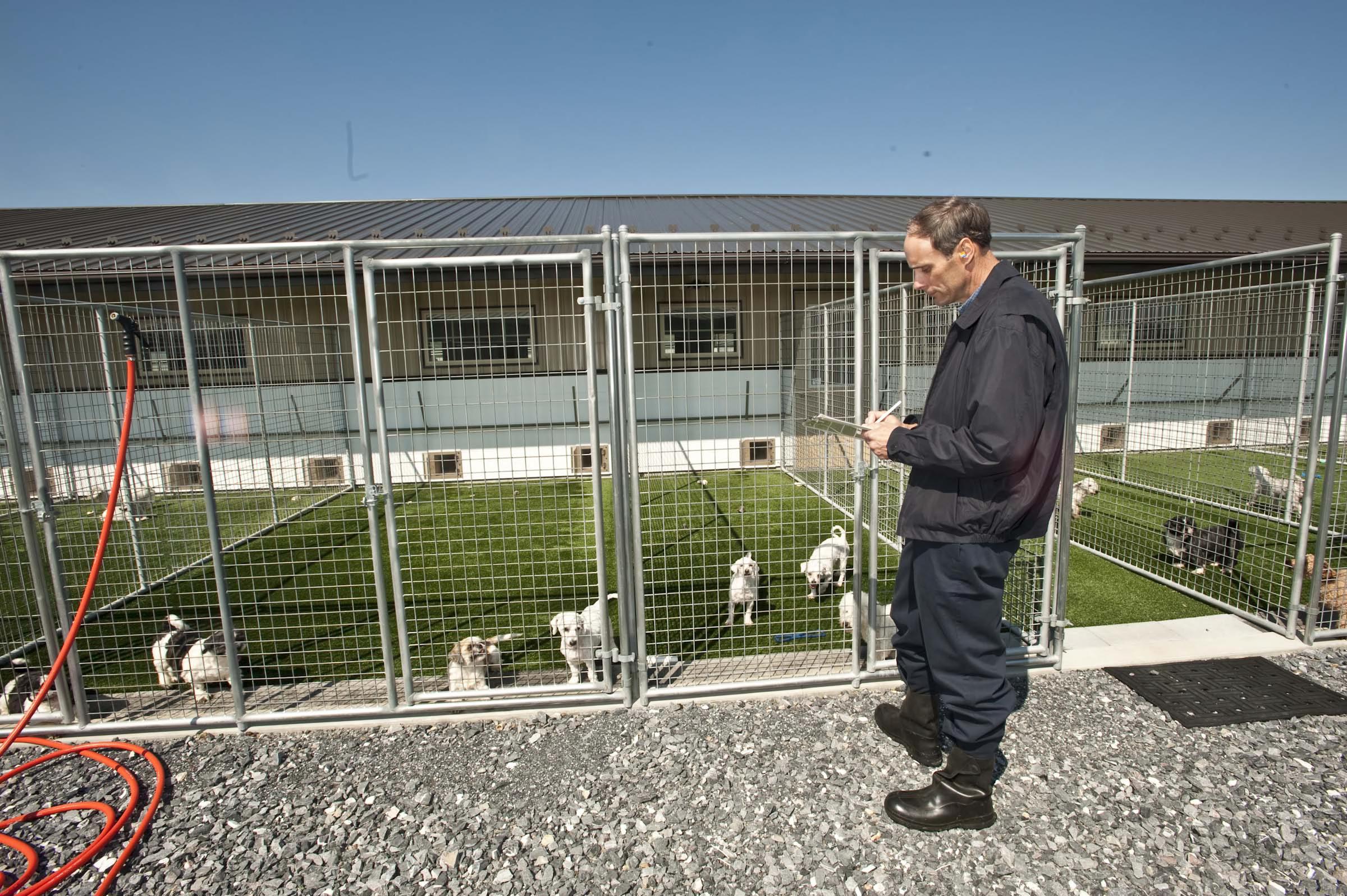Animal cruelty is the act of causing an animal to suffer through abuse, neglect, or other means. Animal cruelty can affect pets, farm animals, animals in captivity in such facilities as zoos or laboratories, and wild animals around the world. Many countries have laws against causing unnecessary or unreasonable harm to animals.
Animal cruelty can be active or passive. Active cruelty, sometimes called animal abuse, happens when a human being intentionally performs a harmful act toward a nonhuman animal. It often involves physical violence against the animal. Active cruelty can also take the form of exhausting a working animal or caging an animal such that it cannot engage in natural behaviors. Animal fighting, such as dogfighting or cockfighting, is another form of active cruelty. In animal fighting, people force dogs, roosters, or other animals to fight each other for entertainment or profit. Researchers have linked active animal cruelty to other types of violent and criminal behavior.
Passive animal cruelty happens when someone causes harm to an animal not through any specific action, but through neglect. Passive cruelty can involve ignoring the needs of an animal, which can lead to starvation, illness, or other forms of suffering. Failing to give a pet enough food or water is one example of passive animal cruelty. Neglect may also result from animal hoarding. In animal hoarding, a person collects large numbers of pets or farm animals, leading to inhumane living conditions for the animals. People often commit passive cruelty because they do not know how to properly care for an animal. However, passive animal cruelty can also be the result of intentional behavior. For example, passive cruelty often occurs in puppy mills—dog-breeding facilities known to cause suffering to dogs through overbreeding and neglect. Similarly, many factory farms neglect to provide their animals with humane living conditions. Such establishments may engage in passive cruelty to save money and make a quick profit.
Some animal-harming practices are widely accepted. Many people consider killing an animal for food to be acceptable. Killing invasive animals or pest animals such as rats is a common practice in many places. In some places, certain forms of animal cruelty are part of cherished cultural traditions. For example, bullfighting, a contest in which a person called a matador uses a sword to kill a bull, has been a tradition in Spain for hundreds of years. Many local Spanish governments have banned bullfighting as inhumane, but the tradition is still practiced in much of the country.
Many countries have laws forbidding cruelty to animals. For example, dozens of countries have banned the use of wild animals in circuses. Dogfighting is illegal in many countries worldwide. A number of local and national governments have banned fur farms (farms that raise animals for their fur). World Animal Protection, an international animal welfare organization, has worked with hundreds of other groups to propose the Universal Declaration on Animal Welfare to the United Nations (UN). The declaration would act as an agreement among participating nations to recognize animals as sentient (capable of feeling), to protect animal welfare, and to prevent animal cruelty.

There are a number of organizations dedicated to fighting animal cruelty. Society for the Prevention of Cruelty to Animals (SPCA) is the name of many organizations throughout the world that enforce animal protection laws by investigating reports of animal cruelty. People for the Ethical Treatment of Animals (PETA) is the world’s largest animal rights organization. Organizations such as the Africa Network for Animal Welfare, Animals Asia Foundation, and Animals Australia work to promote the humane treatment of animals in specific regions. Other organizations focus on preventing certain forms of cruelty or protecting specific kinds of animals. For example, Cruelty Free International is dedicated to ending laboratory experiments on animals. Parrots International works to protect and improve the lives of wild parrots and pet parrots.
Many animal welfare organizations, veterinarians, and other groups and individuals observe what are known as the “five freedoms” in establishing humane conditions for animals. The five freedoms define the basic standards of animal welfare as providing (1) freedom from hunger and thirst; (2) freedom from discomfort; (3) freedom from pain, injury, or disease; (4) freedom to express normal behavior; and (5) freedom from fear and distress. Such standards are applied to farm animals, animals used for entertainment, household pets, and other animals in captivity.
To report animal cruelty, people can contact their local animal control agency or animal shelter. They can also contact the local police department or call an emergency telephone number for help.
